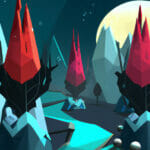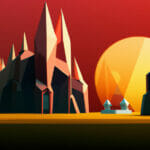Welcome to our tutorial on Roblox coding! Through this exciting journey, you’ll uncover the wonders of game development on the Roblox platform. You’ll learn how to control game mechanics, create immersive scenarios and mold your dream games into digital reality.
Table of contents
So, What Exactly is Roblox Coding?
Roblox coding is the practice of scripting games on the Roblox platform using the Lua programming language. Lua is regarded as a “friendly” language due to its simple syntax and easy-to-grasp fundamentals.
What is It Used For?
Roblox development isn’t simply about coding. It’s about breathing life into your unique game ideas. Roblox coding is used to implement fun gameplay mechanics, complex algorithms, interactive GUIs, and so much more!
Why Should I Learn Roblox Coding?
Learning Roblox coding is a powerful step in any coder’s journey. Not only does it provide a fun introduction to game programming, but it also opens up potential avenues for monetization! Crafting games that people love to play might just become your chosen career path.
Moreover, since Roblox uses the Lua language, the skills you pick up will be transferable to other game engines such as Love2D or even Garry’s Mod.
Getting Started with Roblox Lua
Let’s kick things off with some basic Lua syntax. Most scripts in Roblox require a fundamental understanding of Lua’s variables, functions, and control flow concepts.
Follow along with the code snippets and try running them in Roblox Studio’s script editor. Here’s how to declare a variable in Lua:
local playerHealth = 100
Easy, right? Of course, game programming consists of a lot more than variables. Let’s dive into defining and calling functions:
local function calculateDamage(health, damage)
return health - damage
end
local newHealth = calculateDamage(playerHealth, 25)Creating a Roblox Script
Now that we’ve covered some Lua basics, let’s dive into creating a Roblox script. Start by creating a new script inside a part of your workspace:
local part = game.Workspace.Part
local script = Instance.new("Script", part)This code generates a new script inside a given part in your workspace. Next, let’s give our script some functionality.
Scripting a Click Detector
We’ll design a script that changes the color of a part when clicked. To achieve this, we will need to use a ClickDetector.
local part = game.Workspace.Part
local clickDetector = Instance.new("ClickDetector", part)
clickDetector.MouseClick:Connect(function(player)
part.BrickColor = BrickColor.new("Bright red")
end)Scripting a Health System
Let’s advance our programming prowess to script a basic health system for a character.
local player = game.Players.LocalPlayer
local character = player.Character or player.CharacterAdded:Wait()
local humanoid = character:WaitForChild("Humanoid")
humanoid.HealthChanged:Connect(function(currentHealth)
if currentHealth <= 0 then
print("Player has run out of health!")
end
end)Note: Make sure to have a humanoid object in your character for the above script to work.
Diving Deeper into Roblox Coding
Now that we’ve gotten our feet wet with Roblox Lua, let’s push into more complex territory. Boundless possibilities await in Roblox coding, including designing worlds through terrain generation and crafting AI for NPCs.
Designing Custom Terrain
Roblox game maps don’t have to be manually crafted. With scripting, you can generate fascinating, complex game environments. Here’s a simple example of terrain generation:
local terrain = game:GetService("Workspace").Terrain
local size = Vector3.new(25, 25, 25)
terrain:FillBlock(CFrame.new(0, -6, 0), size, Enum.Material.Grass)This script creates a block of terrain using the FillBlock method. It’s a small step in terrain generation, but it illustrates just how programmable Roblox’s world is.
Adding NPCs and AI
No game is complete without characters. Whether they’re friend or foe, NPCs add depth to any game environment. Let’s script an NPC that follows the player.
local player = game.Players.LocalPlayer
local npc = game.Workspace.NPC
while true do
npc.Humanoid:MoveTo(player.Character.HumanoidRootPart.Position)
wait(1)
endIn this script, an NPC named NPC (found in the workspace) will continuously attempt to move to the player’s current position. It achieves this through the Humanoid object’s MoveTo function, followed by a 1-second delay.
Adding GUI Elements
Roblox GUI elements engage players more and enhance overall gameplay experience. Let’s create a simple ScreenGui:
local screenGui = Instance.new("ScreenGui", game.Players.LocalPlayer:WaitForChild("PlayerGui"))
local textLabel = Instance.new("TextLabel", screenGui)
textLabel.Text = "Welcome to My Game!"This script, which must be executed from a LocalScript, creates a new ScreenGui in the player’s PlayerGui. It then adds a TextLabel with a welcome message. There’s so much more to be explored with GUI development, such as input handling and animation!
Changing Graphics Settings
Finally, Roblox scripts can even modify the game’s graphics settings. This includes things like outlines, shadows, and the level detail. For example, here’s how to toggle outlines:
game:GetService("OutlineService").Outlines = falseRaising or lowering the graphics settings can help ensure smooth gameplay for players on all types of hardware.
And there you have it – a comprehensive introduction to Roblox coding and its boundless possibilities. So, what are you waiting for? Start crafting your Roblox masterpiece today!
Developing Advanced Interactions
Once you’ve mastered the basics, it’s time to advance into developing interesting mechanics and features for your game. From complex character animation to creating mini-games, let’s see what magic we can weave.
Character Animation
Animating characters brings player avatars and NPCs to life, making the gameplay experience more immersive. Here’s an example of how to play an animation on a character:
local anim = Instance.new("Animation")
anim.AnimationId = "rbxassetid://your_animation_id"
local player = game.Players.LocalPlayer
local character = player.Character or player.CharacterAdded:Wait()
local humanoid = character:WaitForChild("Humanoid")
local animationTrack = humanoid:LoadAnimation(anim)
animationTrack:Play()In this script, replace “your_animation_id” with the actual Roblox asset ID of the animation you want to play.
Creating Mini-Games
Mini-games are a fantastic feature to keep players entertained and engaged. Let’s create a simple tag game. When a player touches an NPC, they become “it,” and their character color changes.
local npc = game.Workspace.NPC
local tagGameActive = true
npc.Touched:Connect(function(hit)
if tagGameActive and hit.Parent:FindFirstChild("Humanoid") then
game.Players:GetPlayerFromCharacter(hit.Parent).Character.HumanoidRootPart.BrickColor = BrickColor.new("Bright red")
print(hit.Parent.Name.. " is now 'it'")
end
end)In this script, when a player touches the NPC, their HumanoidRootPart’s color changes to bright red, and a message indicating they are “it” is printed.
Modifying Physics Properties
Spicing up game physics can provide unique gameplay experiences. Here’s how you can increase the game’s gravity:
game.Workspace.Gravity = Vector3.new(0, -150, 0)
This script multiples the game’s base gravity by 1.5, creating a “heavier” environment.
Implementing Teleportation
Next, let’s implement an interesting mechanic: teleportation. This script will teleport the player to a particular position when they touch a part.
local teleportPart = game.Workspace.TeleportPart
local targetPosition = Vector3.new(100, 50, 100)
teleportPart.Touched:Connect(function(hit)
local character = hit.Parent
local humanoidRootPart = character:FindFirstChild("HumanoidRootPart")
if humanoidRootPart then
humanoidRootPart.CFrame = CFrame.new(targetPosition)
end
end)In this script, when a player touches a part named ‘TeleportPart’, they are teleported to the Vector3 position specified in ‘targetPosition’.
Mapping Keyboard Inputs
Finally, let’s give the player some control through keyboard inputs. This following script maps the spacebar to make the player jump:
local player = game.Players.LocalPlayer
local userInputService = game:GetService("UserInputService")
userInputService.InputBegan:Connect(function(input, isProcessed)
if input.KeyCode == Enum.KeyCode.Space and not isProcessed then
player.Character.Humanoid.Jump = true
end
end)Packed with these new set of skills, you’re more than well-equipped to start creating sophisticated Roblox games that players will love!
Where to Go Next and How to Keep Learning
Embarking on your game development journey is an adventure that never ceases to amaze. Each step opens new doors of creativity and expertise. Now that you’ve familiarized yourself with the basics of Roblox coding and created some engaging game mechanics, it’s time to proceed to the next level!
We, at Zenva, offer the perfect opportunity to carry on your learning pathway with our Roblox Game Development Mini-Degree. This extensive program immerses you headlong into Roblox Studio and Lua, expanding over a variety of game genres, from obstacle courses to multiplayer games. The mini-degree suits beginners and experienced developers alike, offering flexible learning options that cater to your pace. Upon finishing the courses, you’ll possess a polished portfolio that showc ases your mastery, paving the way for a lucrative career in game development.
If you’re interested in explorining a wider selection of courses, check out our extensive Roblox collection. This library opens an array of possibilities to dive deeper, expanding your coding prowess and game creation finesse. With Zenva, you can go from beginner to professional at your own pace, while tailor-fitting your learning experience. So go on, step into a world of code, creativity and fun with Zenva!
Conclusion
Crafting your own world through code and imagination is an invaluable skill that’s not only fun but, with platforms like Roblox, can be turned into a rewarding career. We hope that this introductory guide has sparked your interest in Roblox scripting and emphasized just how limitless the platform’s coding possibilities can be.
Game development is an ever-evolving realm of wonders, and there wouldn’t be a better time to dive in. Keep learning, keep coding, and remember – your game, your rules. So, gear up and embark on your Roblox game development journey with us at Zenva Academy and let us empower you to create, innovate, and impress with your games. We can’t wait to see what you’ll create!
Did you come across any errors in this tutorial? Please let us know by completing this form and we’ll look into it!

FINAL DAYS: Unlock coding courses in Unity, Godot, Unreal, Python and more.







